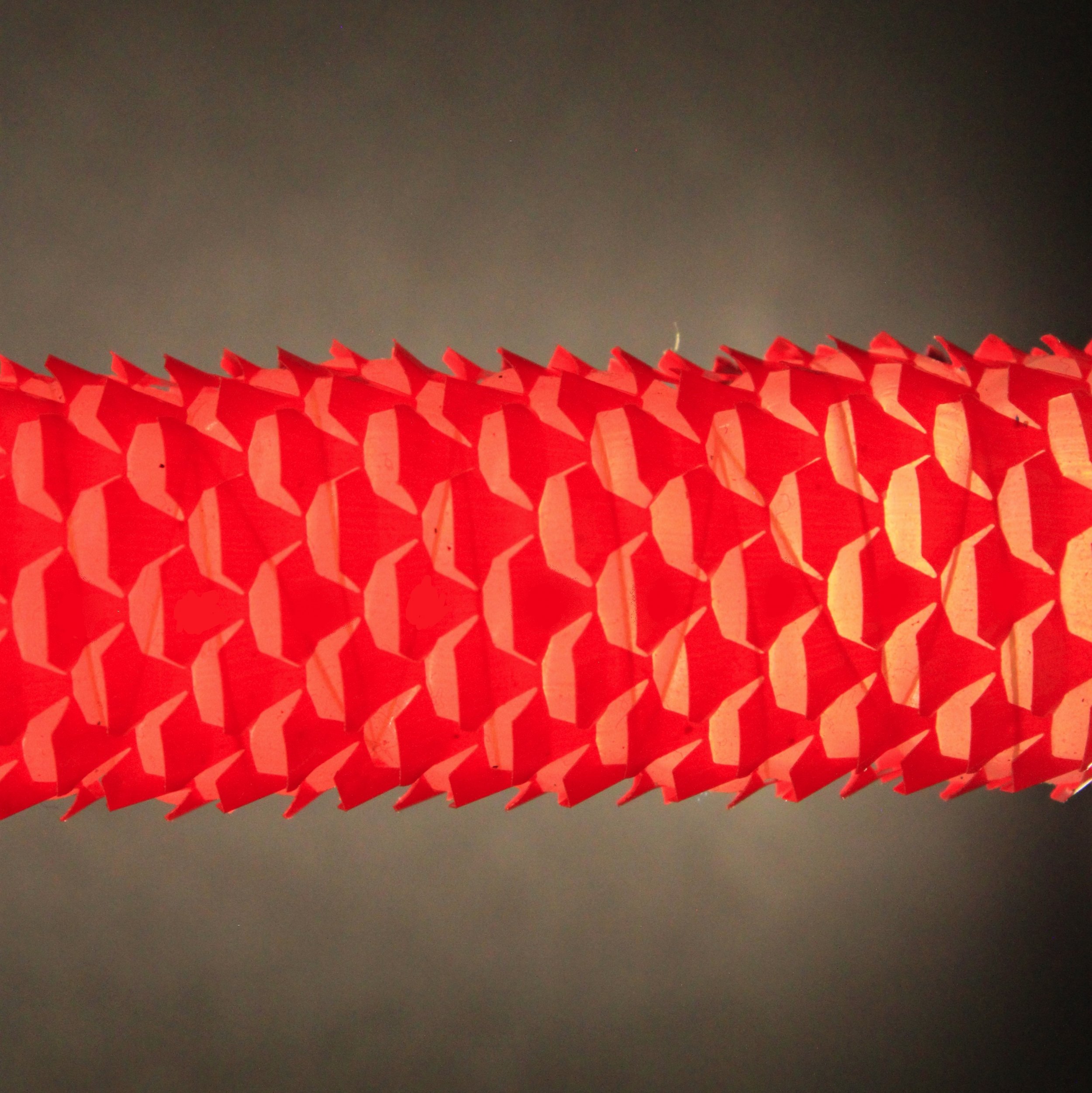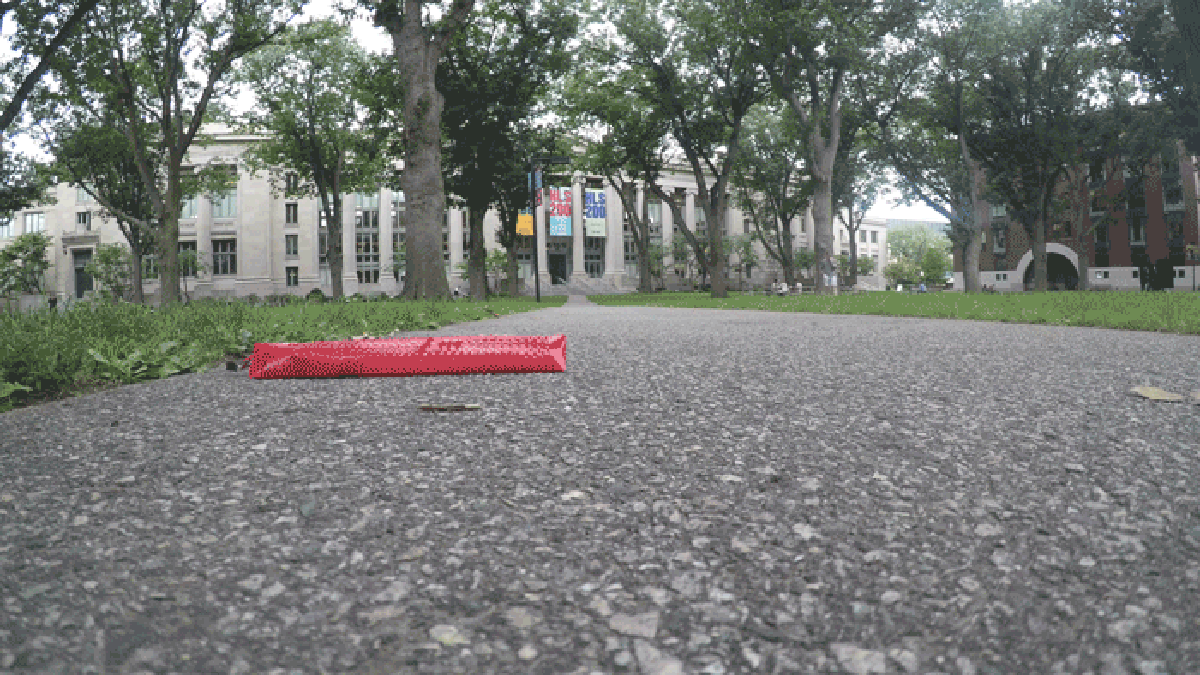
Robots are getting stronger, faster and more flexible than people every day. The last few months have brought us superhuman robots that can skirt across water, lift 1,000 times their own weight and, a little more prosaically, open doors.
Now, researchers have created a robot that can slither just like a snake. Using artificial scales inspired by paper-cutting art, the soft robot wiggles along the ground untethered.
Behold:

The robot's creators think the design could eventually be used for search and rescue missions and even keyhole surgery.
The research was published in Science Robotics.
Kirigami snakeskin scales
The morphable robot is really an elastic tube which swells and shrinks with air. Sliced plastic scales transform the skin into an adaptable 3-D surface.
The artificial scales mimic snakeskin, which allows the creatures to propel themselves forward along the ground, through small cracks and even up into trees.
The researchers used principles of "kirigami"—a variation of origami, which uses cuts rather than folds. Lasers sliced small cuts into a plastic sheet, which the team wrapped around the elastic tube.
When the tube expands, the kirigami scales pop out and grip the ground like snakeskin. When it shrinks, the skin becomes flat, propelling the tube forward.
Different cuts lead to different styles of slithering. A trapezoidal pattern, the researchers found, gave the robot a longer stride.
"We show that the locomotive properties of these kirigami-skins can be harnessed by properly balancing the cut geometry and the actuation protocol," said first author Ahmad Rafsanjani from the Harvard John A. Paulson School of Engineering and Applied Sciences (SEAS).
Adding integrated on-board control, sensing, actuation and a small power supply, the team built a robot free to slither around the Harvard campus.
Future applications for the skin-crawlers
The team have high hopes for the future of their scaly beast. They believe the concept has applications far beyond campus crawling.
"We believe that our kirigami-based strategy opens avenues for the design of a new class of soft crawlers," said Katia Bertoldi, a professor of applied mechanics and senior author of the paper. "These all-terrain soft robots could one day travel across difficult environments for exploration, inspection, monitoring and search and rescue missions or perform complex, laparoscopic medical procedures."
Uncommon Knowledge
Newsweek is committed to challenging conventional wisdom and finding connections in the search for common ground.
Newsweek is committed to challenging conventional wisdom and finding connections in the search for common ground.
About the writer
Katherine Hignett is a reporter based in London. She currently covers current affairs, health and science. Prior to joining Newsweek ... Read more
To read how Newsweek uses AI as a newsroom tool, Click here.






